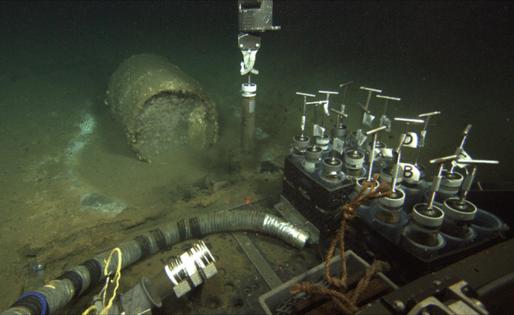'Nothing is untouched': DDT found in deep-sea fish raises troubling concerns for food web
Published in News & Features
LOS ANGELES — For several years now, one question has held the key to understanding just how much we should worry about the hundreds of tons of DDT that had been dumped off the coast of Los Angeles:
How, exactly, has this decades-old pesticide — a toxic chemical spread across the seafloor 3,000 feet underwater — continued to reenter the food web?
Now, in a highly anticipated study, researchers have identified tiny zooplankton and mid-to-deep-water fish as potential links between the contaminated sediment and the greater ecosystem.
For the first time, chemical analyses confirmed that these deep-sea organisms are contaminated by numerous DDT-related compounds that match similar chemical patterns found on the seafloor and animals higher up on the food chain.
“This DDT pollution happened several decades ago, there’s no new source, it’s been banned ... but this old source is still polluting the deep-ocean biota, which is really alarming,” said Eunha Hoh, whose lab at San Diego State’s School of Public Health led the study’s chemical analysis. “We’re not talking about zooplankton collected in 1960 — we’re talking about zooplankton collected now, in the deep ocean, that is still polluted with DDT.”
Hoh’s team had already found significant amounts of DDT-related chemicals in present-day dolphins and coastal-feeding condors (and a recent study by another team even connected an aggressive cancer in sea lions to DDT). But even though DDT has clearly been accumulating at the top of the food chain, how the DDT reached these animals has been somewhat of a mystery. Key questions remain on whether it has been coming from more shallow sources (such as the Palos Verdes Shelf Superfund site, where DDT had been discharged for years via the sewer system), or from the deep-sea sediment itself.
“It really (hits home) this concept that nothing is untouched,” said Lihini Aluwihare, a chemical oceanographer whose lab at the University of California, San Diego’s Scripps Institution of Oceanography helped piece together the many multi-disciplinary aspects to the study. “Establishing the current distribution of DDT contamination in deep-sea food webs lays the groundwork for thinking about whether those contaminants are also moving up through deep-ocean food webs into species that might be consumed by people.”
The study, published Monday in Environmental Science & Technology Letters, is one of many research efforts sparked by a 2020 Los Angeles Times report that detailed the little-known history of ocean dumping off the Southern California coast — and how the nation’s largest manufacturer of DDT had for years disposed of its waste at sea.
One team of scientists, in an attempt to map and scan the seafloor for DDT-related waste, discovered instead a multitude of discarded military explosives from the World War II era. Another team unearthed records showing that barrels of radioactive waste had also been dumped at sea.
And during an urgent investigation into old and forgotten records, the U.S. Environmental Protection Agency discovered that from the 1930s to the early 1970s, 13 other areas off the Southern California coast had also been approved for all manner of dumping — including the disposal of various refinery byproducts and 3 million metric tons of petroleum waste.
...continued
©2024 Los Angeles Times. Visit at latimes.com. Distributed by Tribune Content Agency, LLC.







Comments